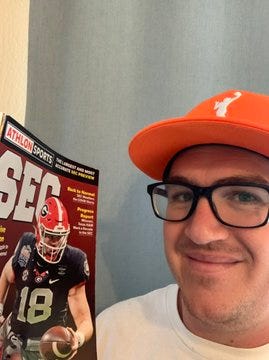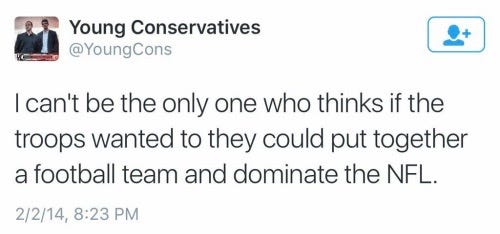The Press Break Q&A: College Football Dark Horses, Option Offenses and More
Welcome to The Press Break Q&A, where your questions are answered — or, at the very least, riffed on in what I hope is entertaining fashion.
Before diving into, a quick plug: Summer’s here, which means days on the beach, poolside, or just lounging on the patio. Wherever you opt to laze, might I recommend doing so with a copy of the Lindy’s Sports football annual and the Athlon Sports SEC Preview?
I have an in-depth Q&A with Georgia quarterback JT Daniels in the latter, and the former includes my profile of Brown University’s trailblazing quarterbacks coach as well as the Pac-12 preview.
Onto the questions.

In the Power Five, you could throw out any number of Pac-12 programs that could realistically break out and aren’t generating much national conversation. I attribute that partially to the conference not having a Playoff participant since 2016, partially to the big brand name of USC underachieving most of the last 13 years, and partially to lingering malaise over the 2018 season.
Now, from my perspective covering the league closely, much of it is as much due to lazy echo-chamber chatter. I saw a clip today of Tim Brando claiming the American is stronger than the Pac-12 and…no? Like, not even close?
That circuitously brings me back to the topic at hand, and Colorado is getting virtually no love from what I can glean despite having cracked the Top 25 in 2020 and returning a bulk of last season’s key contributors. The Buffs bring Alex Fontenot back from injury to join Jarek Broussard, forming what I believe could be one of the best running-back rotations in college football.
But the Pac-12 South is a fascinating logjam with five teams that could all realistically win the division. UCLA intrigues me but needs to prove it can parlay experience into wins, and you can typically count on Utah to win at least eight games under Kyle Whittingham.
Washington, however, might be the best singular answer. The Huskies are stacked on defense, and if they can find a consistent passing attack — not even prolific, just dependable — they have a manageable road to the Playoff.
Outside of the Pac-12, Wake Forest piques my interest. The Demon Deacons have the handicap of playing in Clemson’s division, which makes conference-title contention unlikely, but Dave Clawson has quietly established some consistency that could manifest in a 9 or even 10-win campaign. Quarterback Sam Hartman is a rising star, and I could see the Deacs, who get four of their first five at home, reaching a Nov. 6 matchup at North Carolina undefeated.
The Group of Five is more difficult to pinpoint year-to-year. I offer up as examples North Texas in 2017, nine-win FIU in 2018, and Coastal Carolina’s dream season of 2020. Almost every autumn, an unexpected Group of Five program emerges through a combination of upperclassmen developing, a fast-rising coach/coordinator, and the right blend of talent.
One to keep an eye on, however: UT-San Antonio.
Since launching a decade ago, UTSA has had an aura about it suggesting it could be one of the next, great non-power conference programs. While the Roadrunners finished with a winning record and reached a bowl in 2020, their losses might be the most enticing: at C-USA champion UAB, at BYU and in the First Responder Bowl to Louisiana.
All three were by a single possession, and the latter two finished ranked in the Top 25.
With an abundance of experience on both sides of the ball and the addition of talented transfers on defense, UTSA could win its first-ever C-USA championship.

Removing from the conversation Clay Helton, who the louder USC fans and a contingent of media have insisted is on the hot seat since roughly Thanksgiving 2015; and Herm Edwards, whose anticipated breakout season is clouded with allegations of recruiting violations; the answer is still in the South: Chip Kelly.
The Chip Kelly hire shocked me — not because I thought it was a bad hire, but rather, I didn’t anticipate Jim Mora being fired during the 2017 campaign. What’s more, I really didn’t anticipate UCLA, which at the time didn’t even have a true practice facility for its football program, spending the money to bring Kelly away from TV and back to college sidelines.
Since taking the reins, I’m still shocked not by the hire, but the on-field product. The Bruins endured two brutal starts in 2018 and 2019, then finished each season strong enough to generate buzz from pundits desperate to have the Old Chip Kelly, the Oregon Chip Kelly, back in the mix.
But UCLA’s offenses have not been at all comparable to Kelly’s Oregon teams, and the Bruins have been wildly inconsistent on defense. The past three seasons have felt like an extension of the final two of Mora’s tenure in that regard.
Dorian Thompson-Robinson has started to really develop nicely at quarterback, and Greg Dulcich could be college football’s next unicorn tight end. Hope has preceded each of UCLA’s previous three seasons under Kelly, however, and hope won’t buoy the Bruins into a fifth Kelly season if 2021 fails to deliver.

A few things to clear up: No. 1, my middle name is Thomas. I think the alliteration is cool sounding for someone in media, so I hesitate to start using a T. in bylines. But my parents obviously did not anticipate the unceasing razzing about my initials that began in elementary school. Perhaps instead of shifting to “Kyle T. Kensing” as my byline, I could go by K. Thomas Kensing.
It sounds artsy and is reminiscent of C. Thomas Howell, who was never involved in anything problemaaaahhh, hey what’s all this then?!
That out of the way, another item to note is that this question is a riff on one of the most legendary tweets ever uploaded to the social-media platform Twitter.
Now THAT is some serious pandering. The idea of a service academy contending for the Playoff is much more realistic, considering Army boasts perhaps the most dominant dynasty in the sport’s history and, in non-global wartime, Navy has become a consistent Top 25 finisher under Ken Niumatalolo.
Before Navy’s current run, Fisher DeBerry led Air Force teams that regularly cracked the Top 25. DeBerry disciple Troy Calhoun has continued on with many similar schemes to DeBerry, but in that is the chief reason combining the programs wouldn’t work.
Yes, Air Force, Army and Navy all run variations of the option. Each is also completely different from one another.
Air Force
Army
Navy
While there are similarities, the nuances are dramatic enough to be significant departures from one another. It’s similar to how Mike Leach runs an air-raid offense at Mississippi, and Lincoln Riley runs an air-raid at Oklahoma, but they are two wildly different systems.
Speaking of the air-raid, VMI is the only Div. I military program to deviate from the option. It’s curious that this question neglects both The Citadel and VMI, the latter of which won the Southern Conference this past spring. Curious, indeed.
As you might have guessed from the above, I really love option offenses. But, that’s like saying “I love ice cream!” when you adore vanilla but hate chocolate.
Option offenses come in many flavors, like the version Rich Rodriguez popularized at West Virginia — a program that succeeded decades prior with Bobby Bowden implementing the veer, another option attack but with vastly different principles.
I once jokingly asked Rich Rod about running the Single Wing at Arizona. While rooted in option principles, he said he didn’t know how to use the Single Wing.
On my old blog a few years ago, I did some Big J work on the option experiencing a revival. That season, Keenan Reynolds was in the Heisman Race, Air Force won its division in the Mountain West, New Mexico — NEW MEXICO — made a bowl game, and The Citadel stunned South Carolina during SEC Bodybag Week. The Citadel’s head coach in that contest, Mike Houston, led James Madison to the FCS National Championship the very next season.
That option feature has since been archived and is accessible on Patreon. While I’m biased, think it’s very much worth the $1 subscription fee.
Anyway, someone I noted in that feature whose version of the option I really loved was Bob DeBesse’s, specifically in his time at Sam Houston.
Sam Houston hired Willie Fritz early last decade. Were it not for North Dakota State’s dominance of FCS, I believe the Bearkats would have won at least one national championship prior to this spring.
DeBesse oversaw the offense, innovating a version of the option that blended a potent passing attack with the multifaceted rushing looks. New Mexico enjoyed some success hiring DeBesse from Sam Houston, and below, the coach breaks down his scheme.
No program will ever run the option more effectively than Nebraska in the 1990s, but that so many unique versions continue to thrive today warms my heart.







